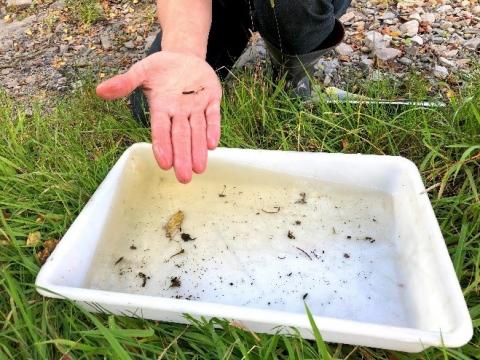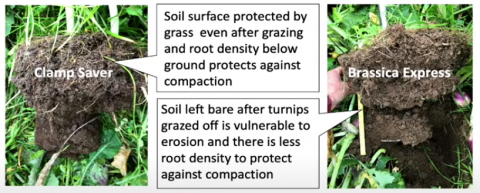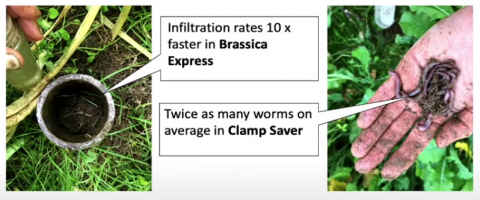Dolygarn – alterative forage options project update - September 2020
A socially distanced visit was carried out at Dolygarn on 9 September 2020.
During this visit, Charlie Morgan measured the yields of both crops, Clampsaver and Brassica Express (tonnes of DM/ha). Due to the nature of both crops, this measurement isn’t something that can be done with a platemeter. The crops in both fields were slightly variable, but variable between good and excellent, therefore we are very happy with the establishment of both crops. The average yield for the Clampsaver was between 4.5-5 tonnes of DM/ha, whereas the average yield for the Brassica Express was between 6-6.5 tonnes of DM/ha. Utilisation losses should be taken in to consideration when looking at these figures, as well as taking into account the regrowth of the Clampsaver. Grazing of both these crops will be very important for efficient and effective utilisation. The energy for the livestock will be in the stem and in the bulbs of the turnips in the mixes, with the protein coming from the leaves.
Image 1. Charlie Morgan collecting samples from the Clampsaver trial field to measure average yield.
Images 2 and 3. The Clampsaver field, both trial fields are now ready to be grazed.
Image 4. Bride Whittle (Wye and Usk Foundation) looking at soil structure and worm count population with farmer, James Powell.
Image 5. shows the findings from taking a sample from the river Ithon that runs through the bottom of Dolygarn farm (Dolygarn sits near the top of the river Ithon catchment). Identifying the number and species of invertebrates that live in the river is a good indication of how healthy the river is.
Image 5.
During this visit, Bridie Whittle (Wye and Usk Foundation) carried out soil assessments at five various points on both fields. In the Clampsaver field, the roots were going down to around 11 inches deep, whereas in the Brassica Express field, the roots depth was only 6-7 inches, with the soil fractured below that rooting depth (as you can see from image 6. and 7. below).
Image 6. and 7.
Infiltration tests and worm counts were also carried out by Bridie, the results of which can be seen below in image 8. and 9.
Image 8. and 9.



